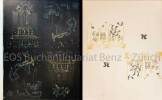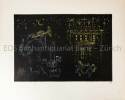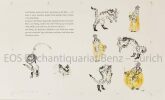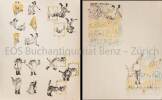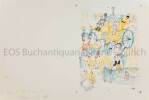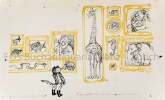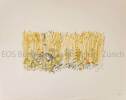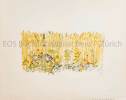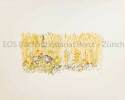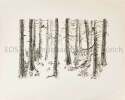-
Type
Any type (2)
Art print (7)
Book (30891)
Disk (1)
Drawings (7)
Engraving (9)
Magazine (129)
Old papers (1)
Photographs (14)
Posters (4)
-
Latest
Last 24h (3)
Last 3 days (9)
Last month (227)
Last week (131)
-
Language
Dutch (1)
English (54)
French (30964)
German (6)
Italian (18)
Japanese (2)
Portuguese (9)
Spanish (11)
-
Century
16th (16)
17th (56)
18th (211)
19th (1544)
20th (9220)
21st (1661)
-
Countries
Belgium (9485)
Brazil (7)
Canada (108)
China (3)
Côte d'Ivoire (67)
Denmark (218)
France (18113)
Germany (1)
Greece (1)
Italy (37)
Switzerland (3025)
-
Syndicate
ALAC (99)
CLAM (42)
CLAQ (94)
CNE (3)
ILAB (10650)
NVVA (1161)
SLACES (1161)
SLAM (8122)
SNCAO (9)
Curlingspieler.
Blattgrösse: 27 x 21 cm. Um 1940. Tuschzeichnung auf Pergamin von Hans Fischer (fis).
Rechts signiert.
Das Lumpengesindel. Lithographie
1943 Biildausschnitt: 32 x 21,5 cm.
Nicht bei Scheidegger. – Vermutlich gleichzeitig 1943 mit den andern Märchenbildern entstanden. Mit Nachlassstempel.
Das Orchester. - Musikmann
Bildausschnitt: 35 x 25 cm. Um 1948. Tuschzeichnung auf Pergamin von Hans Fischer (fis).
Originalzeichnung zu Scheidegger 121. - Mit Tusche signiert.
Der gestiefelte Kater. 2 farb. Lithographien (beidseitig bedruckt).
1957. Blattgrösse: 57 x 45 cm.
Scheidegger S. 311, 29 und 30 sowie S. 310, 28.
Der gestiefelte Kater. Dreifarbige Kreidelithographie.
1957. Bildausschnitt (Passermarken): 27,5 x 42 cm.
Scheidegger 331. - Vom Künstler unten mit Bleistift beschriftet «der gestiefelte Kater - Nachtfest und Zauberschloss» und signiert. - Leicht angestaubt und mit kleineren Randeinrissen.
Der gestiefelte Kater. Dreifarbige Kreidelithographie auf Vélin Rive.
1957. Bildausschnitt: 30 x 43,5 cm.
Scheidegger 331 (mit etwas abweichendem Format). – Mit Signetstempel.
Der gestiefelte Kater. Farb. Lithographie.
1957. Papiergrösse: 30 x 49,5 cm.
Scheidegger S. 307, Nr. 13 u. 14. - Zwei Buchseiten mit Text, handschriftlich bezeichnet «Andruck» und vom Künstler mit Bleistift signiert.
Der gestiefelte Kater. Farb. Lithographie.
1957. Papiergrösse: 56,5 x 45,5 cm.
Scheidegger S. 307 -308, Nr. 14, 15,16, 17, 18 u. 19. - Verschiedener Sujets (Druckbogen vor- u. rückseitig bedruckt).
Der gestiefelte Kater hält die Kutsche. Farbige Lithographie.
1957. Bildausschnitt: 28,5 x 20 cm.
Vgl. Scheidegger S. 307, 15 (Kater und König im Teich). – Hier die 1. Fassung (nicht erwähnt bei Scheidegger). Mit Nachlassstempel und mit Bleistift bezeichnet.
Der gestiefelte Kater in der Bildergalerie des Zauberers. Farb. Lithographie.
1957. Bildauschnitt: 43,5 x 28 cm.
Scheidegger S. 309, 22 u. 23 auf einem Blatt. – Unten vom Künslter mit Bleistift bezeichnet und beschriftet: «Andrucke handsigniert 57 1. Zustand – Der gestiefelte Kater in der Bildergalerie des Zauberers». Mit Nachlassstempel. Rückseitig am oberen Rand mit Klebstreifenresten.
Der gestiefelte Kater ist böse mit den Bauern I. Lithographie.
1957. Bildausschnitt: 21 x 38 cm.
Scheidegger S. 308, 18 mit der Titelbezeichnung «Königskutsche beim Kornfeld». – Unten mit Bleistift signiert, datiert und bezeichnet.
Der gestiefelte Kater – Kornfeld II. Farb. Lithographie auf Vélin Rive.
1957. Bildausschnitt: 20 x 37 cm.
Scheidegger 329. – Nummeriert 37/50 und mit Signetstempel. – Am unteren Rand mit 20-cm langer Knitterfalte.1
Der gestiefelte Kater – Kornfeld I. Lithographie.
1957. Bildausschnitt: 19,5 x 35,5 cm.
Scheidegger 328. Nummeriert 12/50. – Mit Nachlassstempel.
Der gestiefelte Kater – Kornfeld I. Lithographie.
1957. Bildausschnitt: 19,5 x 35,5 cm.
Scheidegger 328. Mit Bleistift bezeichnet «Probe». – Mit Nachlassstempel.
Der gestiefelte Kater. Lithographie.
1957. Bildausschnitt: 14 x 16 cm.
Scheidegger S.308, 20. - Rückseitig mit Nachlassstempel. - Obere linke Ecke mit Knitterfalte.
Der gestiefelte Kater – Wald II. Lithographie auf Vélin Rives.
1957. Bildausschnitt: 27 x 40 cm.
Scheidegger 327. – Nummeriert 20/50 und mit Signetstempel.
Der schwarze Hahn.
Bildausschnitt: 47 x 29 cm. 1951. Farbige Lithographie von Hans Fischer (fis).
Scheidegger 164. – Im Stein signiert und mit Nachlassstempel.
Der schwarze Hahn. Zweifarbige (schwarz-rot) Lithographie.
1951. Bildausschnitt: 47,2 x 30 cm.
Scheidegger 164. – 2. Zustand, Hahnkörper mit weissen eingekratzten Linien. Vom Künstler bezeichnet «II. Zustand, einzige Probe vor der 4 farb. Auflage – Stolzer Hahn».
Der Teufel stürzt vom Turm.
Blattgrösse: 29,5 x 21 cm. Um 1950. Tuschzeichnung.
Unten links vom Künstler mit Bleistift beschriftet: «Der Teufel stürzt vom Turm». Unten rechts und rückseitig mit Nachlassstempel.
Der Vogel. Kreidelithographie, über Holzmaserplatte gezeichnet.
1958. Bildausschnitt: 74 x 36,5 cm.
Scheidegger 354.– Unten vom Künstler mit Bleistift beschrift «Vogel-Mensch» und nummeriert, 14/30. – Wurde 1959 vom Kunsthaus Zürich als Plakat verwendet.
Der Vogel. Kreidelithographie, über Holzmaserplatte gezeichnet.
1958. Bildausschnitt: 74 x 36,5 cm.
Scheidegger 354.– Unten vom Künstler mit Bleistift beschrift «Probe col.» und nummeriert, 14/30. Probedruck mit blauen Ergänzungen.
Der Vogel. Kreidelithographie, über Holzmaserplatte gezeichnet.
1958. Bildausschnitt: 74 x 36,5 cm.
Scheidegger 354. – Unten mit Bleistift nummeriert: 18/30. – Rückseitig mit Nachlassstempel.
Der Vogelmensch.
Bildausschnitt: 47,5 x 23,7 cm. Kreidelithographie auf Velin von Hans Fischer (fis).
Schheidegger 353.- Unten vom Künstler mit Bleistift bezeichnet: "Probe". Leicht stockfleckig. Rechter Rand beschädigt.
Der Vogelmensch. Lithographie.
1958. Bildausschnitt: 47,5 x 23,7 cm.
Scheidegger 353. – Unten mit Bleistift nummeriert: 14/XX. Rückseitig mit Nachlassstempel. – Blatt leicht fleckig.
 Write to the booksellers
Write to the booksellers


